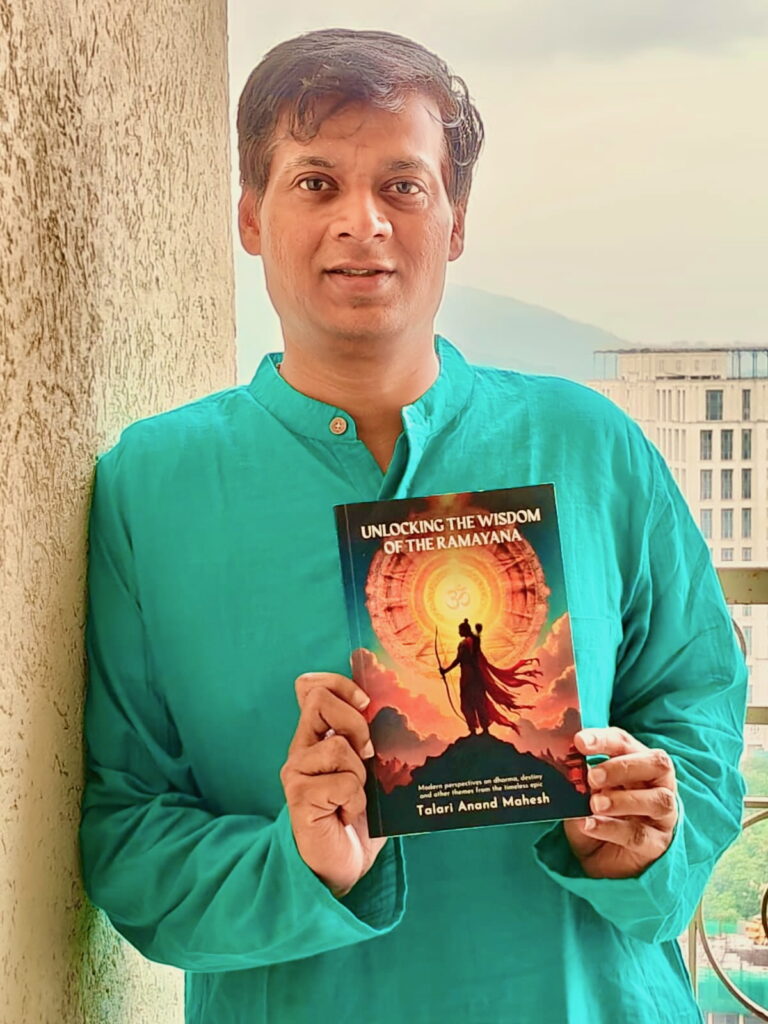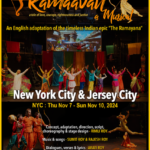Few texts in world literature have proved as infinitely malleable as the Ramayana. Recast across millennia, languages, and geographies—from Valmiki’s Sanskrit original to Kamban’s Tamil Iramavataram, from Tulsidas’s Ramcharitmanas to the Thai Ramakien—the epic resists singular interpretation. As A.K. Ramanujan famously remarked in his essay Three Hundred Ramayanas, it is not a text but a tradition of tellings. It is scripture, folklore, philosophy, political charter, and aesthetic inspiration all at once. Any new reading enters this vast chorus of voices, risking either redundancy or distortion.
Into this daunting landscape comes Talari Anand Mahesh’s debut, Unlocking the Wisdom of the Ramayana (One Point Six Technologies, 2025). A communications professional by training, Mahesh sets himself a modest yet ambitious task: not to retell Valmiki, not to annotate the Sanskrit, but to extract from the epic’s episodes a set of moral, relational, and leadership lessons usable in daily life. “A contemporary guide for modern readers who are hard-pressed for time,” the book presents the Ramayana not as myth or scripture but as a pocket manual for ethical living, decision-making, and personal growth.
A breezy format, a bold promise
At under 230 pages, divided into short chapters, the book is structured for accessibility. Each section isolates a character or episode—Rama’s renunciation, Sita’s ordeal, Lakshmana’s loyalty, Ravana’s hubris, even minor figures such as Vibheeshana or Vali—and refracts it through contemporary dilemmas. Should one privilege duty over desire? How do leaders balance principle and pragmatism? When does ambition turn corrosive? The format recalls the applied wisdom genre more than literary commentary, placing Mahesh alongside modern authors who mine the Mahabharata or Bhagavad Gita for corporate strategy and self-help.
The prose is lucid, conversational, and unburdened by scholarly apparatus. There are no footnotes or critical detours into textual variants; instead, the voice is that of a guide nudging the reader toward reflection. This clarity is no accident—Mahesh’s background in communications shows in the book’s economy and punch. Where a scholar might weigh centuries of interpretive history, he cuts quickly to a “takeaway” framed in leadership or relational terms.
Between dharma and decision-making
Several chapters are notable for their reframing of key themes. Dharma, for instance, is presented not as a fixed code but as a contextual calculus, an act of choosing among conflicting obligations. Rama’s acceptance of exile becomes a meditation on principle versus expediency; Dasharatha’s tragic indecision a warning about promises made in haste. Ravana, often reduced to caricature, is examined as a case study in brilliance ruined by ego—a parable instantly legible to the corporate world.

Most strikingly, Mahesh attends to relationships and communication. Miscommunication between Kaikeyi and Dasharatha, counsel ignored by Ravana, or Sita’s silences are mined for insights into dialogue, listening, and trust. In this, the book gestures toward the Ramayana as a manual not only of kingship and dharma but of interpersonal ethics, a text as concerned with family and friendship as with cosmic battles.
Strengths and blind spots
There is much to commend here. The accessibility of the prose makes the Ramayana available to readers who might shy away from the density of Bibek Debroy’s translations or the scholasticism of Sheldon Pollock. The bite-sized reflections are tailored to an audience of busy professionals, students, and seekers who may know the story vaguely through Ramlila or television serials but have never encountered its moral textures. In this sense, Mahesh does what good popular interpreters should: he lowers the entry barrier without trivializing the source.
Yet the very qualities that make the book readable also delimit its scope. By aiming for applied lessons, Mahesh often simplifies complex cultural and narrative ambiguities. Sita’s ordeal, one of the most contested sites of Ramayana interpretation—read variously as emblem of chastity, victimhood, resilience, or rebellion—is treated in a streamlined fashion. Regional retellings, which radically reconfigure her agency (in some Southeast Asian versions, Sita confronts and even defeats Ravana), remain absent. Similarly, Hanuman’s devotion is presented as uncomplicated loyalty rather than as theologically layered bhakti.
This narrowing reflects a broader trend in contemporary “epic-to-self-help” literature: the transformation of itihasa into a moral toolkit. In doing so, the text is partially dehistoricized. As Pollock observes in The Language of the Gods in the World of Men, the Ramayana was always embedded in structures of power, sovereignty, and ideology. Rama’s figure has been appropriated variously as ideal king, divine avatāra, or nationalist symbol. By lifting characters into abstracted “lessons,” Mahesh sidesteps these thornier entanglements. The choice may make the book more palatable, but it risks flattening the epic’s historical and political weight.
Standing among other interpreters
To situate Mahesh’s work, one might consider three broad strands of modern Ramayana reception. First, the scholarly: translations and analyses by Debroy, Goldman, Thapar, and Pollock that emphasize textual history and cultural context. Second, the literary-retellings: novels by Ramesh Menon, Arshia Sattar, or Amish Tripathi that imaginatively reframe the story. Third, the applied-wisdom genre: pocket manuals that extract leadership or ethical principles for a contemporary readership. Mahesh clearly belongs to this third strand.
Compared to Menon or Sattar, his work is less interested in narrative beauty or character reimagining. Compared to Thapar or Ramanujan, it is lighter on plurality and philology. But compared to most management-oriented Ramayana books, it is more reflective, less crudely instrumental. Mahesh is not reducing Rama to a “CEO archetype” but inviting the reader to think about choices and their costs. If the book does not rival the scholars in depth or the novelists in artistry, it nonetheless carves out a niche: a reflective, non-sectarian guide that treats the Ramayana as wisdom literature in the Stoic or Confucian mold.
A cultural and critical moment
The significance of Unlocking the Wisdom of the Ramayana lies also in timing. The Ramayana today is no neutral epic—it is deeply politicized, invoked in temple-building campaigns, electoral rallies, and culture wars. Against this backdrop, Mahesh’s decision to present it not as nationalist scripture but as universal ethical text is quietly important. His Rama is not the exclusive emblem of a community but a mirror for anyone grappling with principle and compromise. His Ravana is not demonized for his difference but examined as a warning against ego. In refusing to enlist the epic in ideological battles, the book restores some of the ambiguity that modern politics has drained from it.
This is not to say Mahesh is subversive. The book avoids polemic and largely sidesteps contentious debates about gender, caste, or historical appropriation. But even this neutrality is a statement: it reclaims the Ramayana as a field of ethical inquiry rather than as an instrument of identity politics.
Verdict: a modest but meaningful addition
Unlocking the Wisdom of the Ramayana is neither exhaustive nor revolutionary. Scholars will find it thin, traditionalists may balk at its liberties, and serious readers may wish for deeper dives into specific dilemmas. Yet to fault it for what it does not do is to miss what it achieves. As Romila Thapar reminds us, the vitality of the Ramayana lies in its multiplicity, its openness to new tellings. Mahesh’s book is one more telling—not canonical, but contributory, a bridge between ancient narrative and contemporary self-reflection.
For the first-time reader, it offers an approachable entry. For the reflective seeker, it provides prompts for meditation. For the academic, it is a reminder that the epic continues to live outside seminar rooms, refracted through the questions of ordinary life. In that sense, Mahesh does not so much “unlock” the Ramayana as remind us that its doors were never closed.


![Wisdom-Of-Ramayana–Front-Cover[1].jpg](https://southasianherald.com/wp-content/uploads/2025/10/Wisdom-Of-Ramayana-Front-Cover1.jpg-1170x1755.jpeg)



